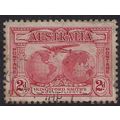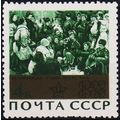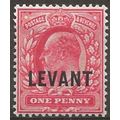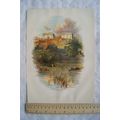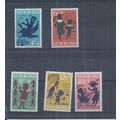Hay-on-Wye, Powys - town & Black Mountains - Judges postcard c.1980s
- Condition : Used
- Dispatch : 2 Days
- Brand : None
- ID# : 128323370
- Quantity : 1 item
- Views : 381
- Location : United Kingdom

- Seller : justthebook (+1699)
- Barcode : None
- Start : Mon 19 May 2014 20:17:13 (BST)
- Close : Run Until Sold
- Remain : Run Until Sold
More Listings from This Seller view all
Seller's Description
- Postcard
- Picture / Image: Hay-on-Wye and the Black Mountains, Powys [formerly Breconshire]
- Publisher: Judges of Hastings
- Postally used: no
- Stamp: n/a
- Postmark(s): n/a
- Sent to: n/a
- Notes / condition:
Please ask if you need any other information and I will do the best I can to answer.
Image may be low res for illustrative purposes - if you need a higher definition image then please contact me and I may be able to send one.
------------------------------------------------
Postage & Packing:
UK (incl. IOM, CI & BFPO): 99p
Europe: £1.60
Rest of world (inc. USA etc): £2.75
No additional charges for more than one postcard. You can buy as many postcards from me as you like and you will just pay the fee above once. (If buying postcards with other things such as books, please contact or wait for invoice before paying).
Payment Methods:
UK - PayPal, Cheque (from UK bank) or postal order
Outside UK: PayPal ONLY (unless otherwise stated) please. NO non-UK currency checks or money orders (sorry).
NOTE: All postcards are sent in brand new stiffened envelopes which I have bought for the task. These are specially made to protect postcards and you may be able to re-use them. In addition there are other costs to sending so the above charge is not just for the stamp!
I will give a full refund if you are not fully satisfied with the postcard.
----------------------------------------------
Text from the free encyclopedia WIKIPEDIA may appear below to give a little background information (internal links may not work) :
*************
Hay-on-Wye (Welsh: Y Gelli Gandryll), is a small market town and community in Powys, Wales, situated on the English border. Often described as ""the town of books"", it is the National Book Town of Wales.
The town lies on the east bank of the River Wye and is within the Brecon Beacons National Park, just north of the Black Mountains. The town is situated just within the Welsh side of the border with Herefordshire, England, which is defined by the Dulas Brook at this stretch. Where the brook joins the River Wye just to the north of the town, the border continues north along the river. Hay has approximately 1,900 inhabitants. The village of Cusop lies on the other side of the Dulas Brook and is in England. The nearest city is Hereford, county town of Herefordshire, some 22 miles (35 km) to the east.
The town was formerly served by Hay-on-Wye railway station by the train services known as the Canney Creeper, which closed in 1963 under the infamous Beeching Axe.
Hay-on-Wye is a destination for bibliophiles in the United Kingdom, still with two dozen bookshops, many selling specialist and second-hand books,[1] although the number has declined sharply in recent years, many becoming general antique shops and similar.[2]
Hay-on-Wye, like Builth Wells, has two Norman castles within a short distance of each other. It seems likely that Hay was fortified by William Fitz Osbern during his penetration of south-east Wales in the summer of 1070 when he defeated three Welsh kings. The history of the site then continues through the lordships of the de Neufmarchés, which was confirmed at the Battle of Brecon in 1093, and also the Gloucester/Hereford families until 1165, when the district of Brycheiniog passed into the hands of the de Braose dynasty of Marcher Lords. In 1230 Hay Castle passed to the de Bohuns and the local history, including the battle near Hay in 1231, is continued through the Mortimer Wars of the 1260s and the battle near Brecon in 1266 down to the death of Earl Humphrey de Bohun in 1298.
Lying close to St. Mary’s Church on the western edge of Hay-on-Wye is a small but well-preserved motte. The site overlooks a gorge and small stream, locally known as The Loggin Brook, that flows into the River Wye, which was undoubtedly one reason for the construction of a motte and bailey castle there. A recently levelled platform under the car park to the north east may have once have housed the castle's bailey. This little fortress was probably the work of William Revel, a knight of Bernard de Neufmarché who is usually referred to as Bernard Newmarch, and may later have been the seat for the manor or commote of Melinog. Other than this, the motte has no further recorded history.
The main fortress within Hay-on-Wye was situated on the great site commanding the town and river under the current ruins of the castle and mansion. This was undoubtedly the 'castello de haia' handed to Miles of Gloucester, 1st Earl of Hereford, in 1121 with Sibyl de Neufmarché, the daughter of Bernard de Neufmarché. It is most likely that the keep stood by this time. It is therefore possible that this is the oldest Norman tower in Wales, dating to the onslaught of William Fitz Osbern in 1070. During the anarchy (1136–54) in the reign of King Stephen a series of charters were passed by the Gloucesters concerning the castle. In 1165 the last of Miles of Gloucester's male descendants was killed at nearby Bronllys Castle and Hay-on-Wye Castle passed into the hands of William de Braose, 3rd Lord of Bramber and of New Radnor and Buellt. The de Braose dynasty were energetic lords and probably built the core of the gatehouse which now stands besides the keep. In the summer of 1198 a major English army formed here before marching off to victory at the Battle of Painscastle some four miles to the north.
In 1230 the last de Braose of Brecon, William de Braose was hanged by Prince Llywelyn ab Iorwerth and Brecon lordship with Hay-on-Wye passed into the hands of the de Bohuns. Taking advantage of this in 1231, Prince Llywelyn ravaged the lands of his de Bohun in-laws during which Hay-on-Wye town was burnt, although the castle survived the onslaught. The castle saw service in the Barons' War of 1263 to 1266, changing hands three times, once being surrendered to the great Simon de Montfort, 6th Earl of Leicester. With the conquest of Wales by King Edward I Longshanks life became more peaceful in this Marcher town.
Around 1401 both town and castle suffered damage by the forces of Owain Glyndwr, although the castle was listed as defensible against the Welsh in 1403. The fortress later passed to the earls of Stafford, who were to become the unlucky dukes of Buckingham during the Wars of the Roses. The castle was repaired during the conflicts of the 1460s, although its military use would have been somewhat dubious against cannon.
In the 1660s, James Boyle of Hereford built a new mansion on the north side of the castle, while most of the curtain wall was demolished to improve the views. The mansion is now used for second-hand bookselling.
type=printed postcards
theme=topographical: british
sub-theme=wales
county/ country=breconshire
number of items=single
period=1945 - present
postage condition=unposted
Listing Information
| Listing Type | Gallery Listing |
| Listing ID# | 128323370 |
| Start Time | Mon 19 May 2014 20:17:13 (BST) |
| Close Time | Run Until Sold |
| Starting Bid | Fixed Price (no bidding) |
| Item Condition | Used |
| Bids | 0 |
| Views | 381 |
| Dispatch Time | 2 Days |
| Quantity | 1 |
| Location | United Kingdom |
| Auto Extend | No |

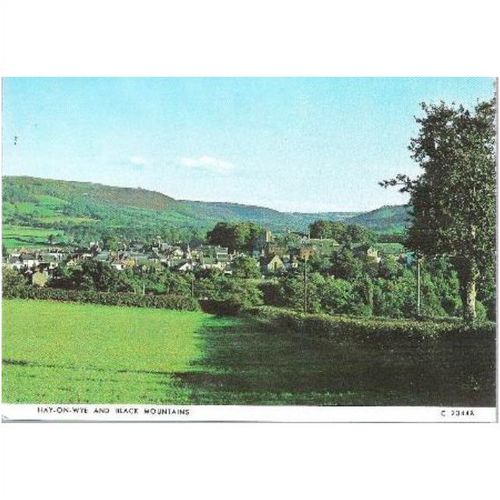

 for 1 item(s)
for 1 item(s)







